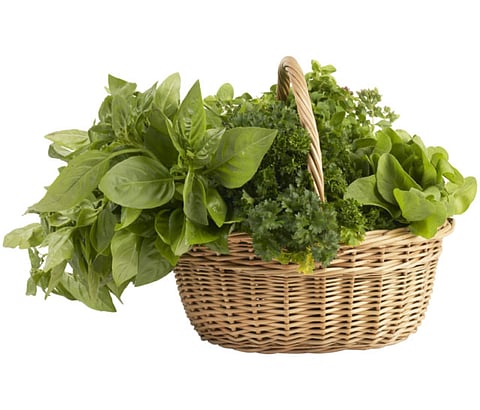Simple ways to add vitamins and antioxidants to meals
Herbs such as basil, parsley, chives, etc, are much more than just garnishes

The vacation house we recently inhabited had a pot of fresh herbs outside the kitchen door, where my daughter liked to sit, blow bubbles and play in the grass. One day, she started ripping the leaves off the basil and parsley and heartily eating them. I know I should have rushed to stop her since they were not our pots, but I was secretly delighted. I gain such satisfaction from seeing any of my children eat any green leafy vegetable, even if those vegetables are not technically ours to eat.
Ounce per ounce, there is as much nutrition, or more, in raw parsley as there is in lettuce, so her unconscious back-door snacking was a win-win. In fact, parsley has 33 times the amount of vitamin C, 16 times the amount of vitamin K, six times the amount of iron and four times the amount of calcium as lettuce.
Other fresh herbs, such as basil, chives, mint, tarragon, cilantro and dill have high amounts of vitamins, antioxidants and minerals, too. Surprising? Herbs have a solid reputation as garnishes and flavourings, but they are actually much more than that. I’d dare to label them a relative (or at least a neighbour) of kale.
Observing my daughter, mindlessly yet healthfully, snack inspired me to revisit herbs. Over the winter I had gotten lazy. But summer is the season for fresh leafy greens, so the time is right.
Here are some kid-friendly ways to incorporate more herbs into meals:
Mix cilantro into guacamole.
Add chopped basil, parsley, dill, thyme, mint, and/or oregano to a salad.
Toss pasta with basil pesto.
Top buttered pasta with chopped fresh herbs.
Mix oregano and basil into spaghetti sauce.
Top pizza with basil and oregano (even a delivery pizza).
Top an omelette or scrambled eggs with any chopped herb.
Whip mashed potatoes with parsley.
Sprinkle chives on a bagel with cream cheese.
Sprinkle chives on an egg salad sandwich.
Stir herbs into potato salad.
Make tabbouleh with parsley.
Mix herbs into mayonnaise.
Flavour butter with herbs.
Infuse olive oil with herbs.
Blend mint into strawberry and blueberry smoothies.
Add mint to lemonade and tea.
Toss peas with mint.
Top cucumbers and green beans with dill.
Make dill pickles.
Add fresh herbs to every soup.
Marinate meat, chicken and fish with herbs.
Top ice cream or fruit with a chocolate mint syrup.
Herbs are easy to grow. Children can plant and nurture them in very little time, with very little money and in very small spaces. Many fresh herbs will thrive on a kitchen counter, while others do better outside. Hardier herbs such as chives and thyme even survive the frost of winter.
Now that we are back from vacation, I aim to plant some basil and parsley with my daughter and hope her snacking perseveres. Perhaps her brothers will get hooked, too. After all, parsley is a natural teeth-cleaner and breath-freshener. Boys, I’m just saying.
FUN FACTS FOR KIDS
In the United States we pronounce “herbs” with a silent “h” (so “erbs”), yet in Great Britain they pronounce the “h”.
Ancient Greeks and Romans crowned their heroes in dill.
In ancient times, rosemary was often made into headdresses for brides.
Herbs were once our medicine. It was believed that parsley could cure stomachaches and rosemary headaches. In fact, many of our modern medicines are based on the healing properties of herbs.
— Washington Post
Sign up for the Daily Briefing
Get the latest news and updates straight to your inbox




